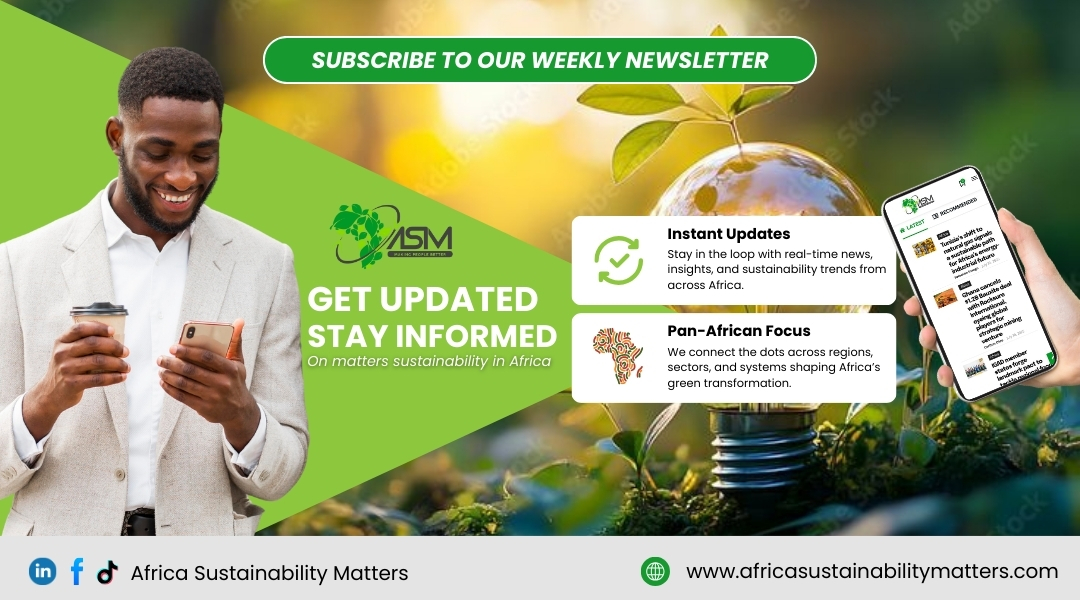On 21–23 October 2025 in Johannesburg, the Carbon Markets Africa Summit (CMAS), will convene more than 280 policymakers, financiers, and project developers from 40 countries to decide how, practically and credibly, Africa can use carbon markets to fund climate action, who will build and buy the credits, where early projects are scaling, why integrity rules now determine value, and how host governments will align voluntary activity with the Paris Agreement’s Article 6.2 framework.
This not another conference this year; it is the test of whether a “carbon economy” can translate into bankable revenue streams on African soil. The Africa Carbon Markets Initiative (ACMI) has set an ambition to expand issuance to roughly 300 million tonnes a year by 2030 and 1.5 billion by 2050, volumes that, at conservative clearing prices, imply billions in annual finance for projects from clean cooking to mangrove restoration.
ACMI’s latest status report ties those volumes to about US$6 billion in yearly revenue by 2030 and over US$120 billion by mid-century, alongside tens of millions of jobs if host-country systems and investor protections mature in time. Those are not slogans; they are the scale thresholds investors now use to size pipelines and justify local currency facilities.
The backdrop is shifting market power. After several bruising years for credit demand and a reckoning over project integrity, Africa’s share of global issuances has climbed: MSCI and the Integrity Council report that African projects accounted for nearly one-fifth of credits issued in 2024, more than double the continent’s share in 2020. That momentum is uneven, nature-based opportunities remain under-exploited, but it signals that buyers are not avoiding Africa; they are seeking high-quality, host-authorized supply with clear claims rules. CMAS lands at the moment when standard-setters and host countries are tightening their guidance, and corporate buyers need assurance that a tonne retired in Lagos or Lubumbashi can be reported with the same confidence as one retired in London.
What might make or break the Johannesburg meeting is policy readiness. Article 6.2 cooperation lets countries authorize transfers of “internationally transferred mitigation outcomes,” turning credits from an offsetting tool into a tradable compliance-adjacent instrument that can flow between states or into aviation and emerging domestic schemes. UNEP-CCC’s live pipeline shows a growing roster of bilateral agreements and pilots, but many African jurisdictions are still finalizing benefit-sharing frameworks, double-counting safeguards, and approval timelines.
Investors can finance risk but they cannot finance regulatory ambiguity. Expect ministers to use CMAS to signal authorization pathways measured in weeks, not quarters, and to publish fee schedules and registry connections that reduce friction for project developers and aggregators.
The finance story is already visible country by country. In South Africa, the region’s most developed financial market, carbon pricing is no longer hypothetical. The statutory carbon tax rate rose at the start of 2025 to R236 per tonne of CO₂-equivalent, with the levy on fuels also adjusted. That price signal is pushing utilities and heavy industry to look harder at procuring high-integrity credits as part of compliance cost management and to explore whether domestic exchanges could list standardized instruments. When the regulator approved a more modest electricity tariff increase earlier this year, it underscored how thin the margin for error is: any mechanism that lowers system-wide abatement cost, including carbon markets, becomes part of the security-of-supply conversation.
In West Africa, the pipeline is broadening beyond flagships. The West African Alliance on Carbon Markets and Climate Finance tracks more than 300 registered activities across the region, with Nigeria alone home to over a hundred, predominantly efficient cookstove programmes. These are precisely the categories that, when verified under tougher methodologies and priced accordingly, can convert household energy transitions into measurable climate outcomes and cash flows for local manufacturers and distributors. New analysis this year suggests floor prices for high-quality cookstove credits are moving out of the single digits and into the teens or higher, which reshapes working-capital models for last-mile distribution.
Nigeria offers a telling micro-economics example. A recently launched large-scale cookstove effort estimates each unit avoids about 1.42 tonnes of CO₂ a year; at 325,000–350,000 stoves deployed, that equates to more than 450,000 tonnes annually. Priced at a conservative US$15–$20 for verifiably high-integrity credits, that’s US$6.8–$9.2 million a year in potential carbon revenue, enough to backstop distribution to low-income households and build local assembly capacity, provided the project meets new integrity screens and aligns with federal authorization rules.
Further south and east, the nature-based puzzle is central to CMAS. Central Africa’s forests, particularly in the Congo Basin, anchor global carbon stocks, yet payments for reduced deforestation have been sporadic and small relative to system value. Even where results-based payments have flowed, such as Gabon’s early UN-backed transactions, the amounts highlight the financing gap between what is needed to keep forests standing and what has actually been paid. Bridging that gap requires buyers who accept conservative baselines, transparent benefit-sharing, and the reality that jurisdictional programmes may deliver fewer but more durable tonnes.
If CMAS can move a handful of Article 6-compatible jurisdictional deals from concept to term-sheet, ministers will have something concrete to take back to parliaments and treasury colleagues.
Coastal countries are also looking at “blue carbon.” Mangrove and seagrass systems sequester at rates that compete with terrestrial projects; in Africa, opportunities run from the Rufiji Delta to the Niger Delta and the Saloum. The science is robust on storage potential, but the investable acreage is constrained by community rights, tenure, and monitoring costs. High-resolution baselines and long-term stewardship contracts raise costs in year one, but they lower reputational risk and litigation exposure over project life, an increasingly decisive variable for corporate buyers.
All this presumes demand. Here, three signals matter. First, governance: initiatives like the Integrity Council’s Core Carbon Principles and the VCMI Claims Code have started to remove the ambiguity that froze procurement teams in 2023–2024. Second, policy: the African Development Bank is designing a facility to help governments and markets meet, including the prospect of listing credits on African exchanges, an infrastructure step that could improve transparency and, over time, price discovery. Third, external pressure: Europe’s carbon border regime and similar measures are pushing exporters to document decarbonisation, making high-integrity credits one of the few near-term tools to manage transition risk while technology and grid upgrades catch up.
Read also: UNDP pushes for high-integrity carbon markets to unlock Africa’s climate finance potential
Follow us on LinkedIn: Africa Sustainability Matters







